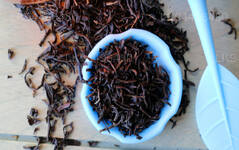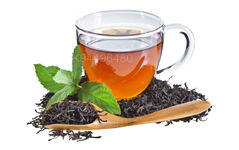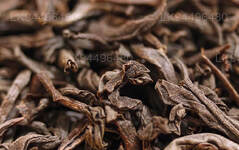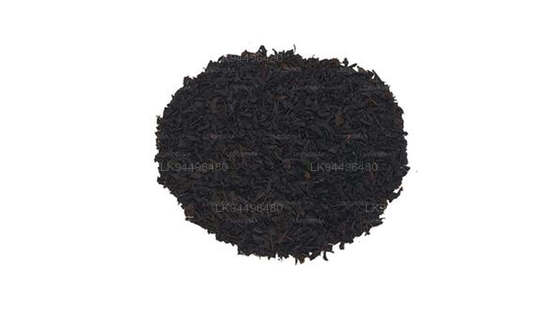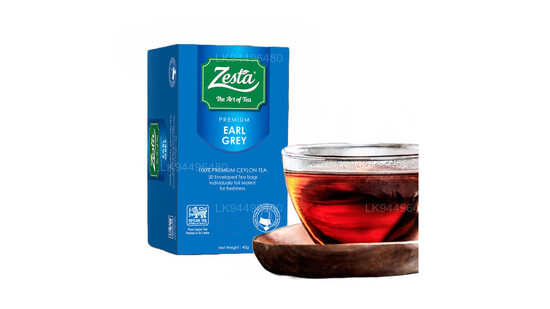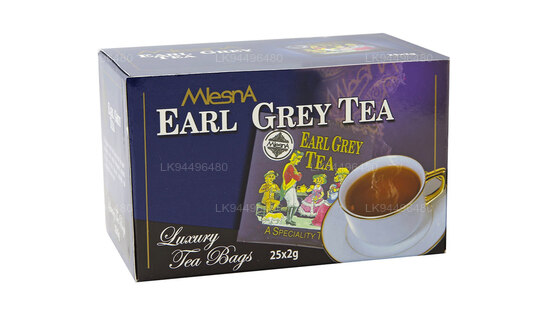Earl Grey
Just like cookie dough goes with vanilla ice cream, peanut butter goes with chocolate, and lime goes with tequila, bergamot goes with black tea to create one of the world’s most beloved teas Earl Grey.
Earl Grey tea, believe it or not, is not its own category of tea. It falls into the category of flavored teas. Flavored teas include any type of tea—white, green, oolong, black—that has been scented or flavored with fruit, flowers, spices, oils, extracts, and natural or artificial flavors.
Earl Grey is one of the most recognized flavored teas in the world. This quintessentially British tea is typically a black tea base flavored with oil from the rind of bergamot orange, a citrus fruit with the appearance and flavor somewhere between an orange and a lemon with a little grapefruit and lime thrown in. Today’s cultivar of the bergamot orange is believed to be a hybrid of the bitter Seville orange native to the Mediterranean and a sweet lime/lemon native to Southeast Asia.
So how did England and the rest of the world come to fall in love with this citrus and floral infused black tea?
Earl Grey originsWhile Earl Grey tea was popularized by the English, it was not an English invention. Scented and flavored teas are uniquely Chinese. Early Chinese tea masters constantly experimented with ways to make their teas more exotic, not only to capture the attention of the reigning emperors of the time but also the business of worldwide trade merchants looking to return home with the unique flavors of the Far East. From fragrant jasmine flowers and wild rosebuds to bitter oranges and sweet lychee fruits, Chinese tea masters infused all kinds of fragrance and flavor into their teas during processing to create distinctive and highly drinkable beverages.
One history of the origins of Earl Grey explains that a Chinese mandarin tea master blended the first Earl Grey tea as a gift for Charles Grey, the 2nd Earl of Grey and Prime Minister of the United Kingdom from 1830 to 1834. According to the Grey family, the tea master used bergamot as a flavoring to offset the lime flavor in the well water on Earl Grey’s estate, Howick Hall, near Newcastle, England. Earl Grey’s wife, Lady Grey, loved the tea so much that she entertained with it exclusively. It proved so popular with London society, she asked tea merchants in London to recreate it. Exactly which English tea merchant marketed the first Earl Grey tea blend is somewhat of a debate in the world of tea. But one thing is for sure: While the 2nd Earl of Grey abolished slavery and reformed child labor laws in England during his political leadership, he will be most famously remembered for the beloved tea he helped introduce to the world.
How Earl Grey is madeA tea is flavored or scented during manufacturing toward the end of the processing, usually once the tea leaves have dried. One way teas are flavored is by blending the finished tea with flowers, herbs and spices so that the blended ingredients are visually appealing and lightly infuse the tea leaves with their aroma and flavor. Another way tea is flavored is by spraying or coated the finished tea with extracts, essential oils or flavoring agents during or after the drying process. This adds much a much stronger flavor to the tea and uses fewer ingredients. The flavoring-to-tea ratio is completely up to the tea manufacturer, and the flavors that come through to a brewed cup of flavored tea will vary by brand.
Earl Grey is most widely defined as a black tea that has been flavored with the oil of bergamot. There is no one way to make Earl Grey tea, however, which is why every Earl Grey tea you've ever tried has probably tasted slightly different.
Type of tea usedThe classic Earl Grey tea is made with a base of black tea leaves. But the black tea used can be anything from Ceylon to Indian to African. It can be a single estate black tea or a blend of black teas from around the world. The black tea flavor can be sweet and floral or rich and malty. It depends completely on the terroir (the characteristics of the geography, climate and culture) of the tea plant and the processing style of the tea master.
Type of bergamot usedBoth synthetic and natural bergamot is used to flavor Earl Grey tea. Synthetic bergamot is popular with manufacturers because its flavor is consistent and it contains no actual citrus, so it is safe to consume for those with citrus allergies. The flavor of natural bergamot can vary immensely depending on where it was cultivated and how it was processed. Natural bergamot is often defined as a sharp and intensely citrus flavor. Calabria, in Southern Italy, is home to 80% of the commercially grown bergamot, followed by France and Turkey.
Amount of bergamot usedThe art and style of the tea master will define not only which type but also how much bergamot is used in a particular Earl Grey blend. Depending on the flavor of the base tea, a tea master may decide to use a subtle amount of bergamot flavor so as not to cover up the delicate flavor of the tea leaves. Or a tea master may decide to give a bold, sharp black tea a hefty kick of bergamot to stand up to the bold flavor profile of the tea leaves.
Tasting Earl GreyThere is something about the sweet, floral, sour and bitter flavor profile of bergamot that blends perfectly with a bold, full-bodied and malty black tea. For some, a flavored black tea is more palatable to sip, hiding some of the astringent or bitter notes that may come through in the steeped tea leaves. For others, a flavored tea is simply a more interesting, exotic and fun way to explore a range of tea flavor profiles.
Earl Grey tea is inspired by the traditional Earl Grey, but it has a delightful lightness and freshness to it. We use one of the finest oils of bergamot, so a mild citrus note hits gently on the center of the palate and seamlessly melds into the satisfying, full-bodied maltiness of our organic black tea.
- The English are fans of flavored teas and blended Chinese Lapsang Souchong black tea with Earl Grey for a smoky version.
- Lady Gray is an Earl Grey blend that is said to be more subtle and more floral than a traditional Earl Grey, but most manufacturers marketing this blend have different approaches.
- The French add their beloved lavender to Earl Grey for a distinctively Parisian version.
- Earl Green is blended using green tea instead of black.
- Rooibos Earl Grey features the South African red rooibos herb, typically marketed as red tea, flavored with bergamot. Earl Grey tea lovers looking for caffeine-free options gravitate toward this blend.
The unique flavor of Earl Grey is so beloved that it has lately leapt out of the teacup and into all kinds of culinary treats, from marshmallows to chocolate to cookies. One of our favorite tea-inspired treats our Earl of Bengal Cookies
Caffeine content in Earl GreyThe caffeine content in an Earl Grey made with a black tea base will be similar to any other cup of black tea. Like any beverage brewed from a caffeinated plant, however, there are a lot of factors that can determine caffeine levels in your cup of Earl Grey black tea, including how the plant was processed and how the beverage was brewed. Between coffee, black tea and green tea, coffee generally has the most caffeine content per 8 oz. cup (95 to 200 mg), then black tea (14 to 61 mg), followed by green tea (24 to 40 mg).
Buying and storing Earl GreyAs with any green or black tea, storing a flavored tea properly will ensure your tea will remain fresh as long as possible in your cabinet. It’s always a good idea to buy tea from a reputable company that can tell you when and how the tea was processed and packaged as well as provide storage and freshness tips.
Generally, an oxidized black tea is more shelf stable than its delicate green tea cousin. But teas that have been flavored have a shorter shelf life than a straight black tea. While your flavored tea won’t really go “bad”, it will get stale if it sits around too long and it will definitely lose its flavor potency. If stored properly in a cool, dark place and in an opaque, airtight container away from light, moisture and pantry items like coffee and spices that can leach flavor into the tea leaves, flavored teas can last six months to a year before they should be used or replaced.
Preparing Earl GreyAlways ask your tea vendor for brewing instructions specific to the tea you purchased, because flavored teas can have different ideal brewing temperatures and steeping times. Here are a few general Earl Grey tea brewing tips to keep in mind
- Use fresh, pure, cold filtered water. Spring water is the best.
- If your Earl Grey has a black tea base, it can typically brewed for longer periods of time and in hotter temperatures than flavored teas with a green tea base. Generally, this is somewhere between 200 and 212 degrees. We steep our Teatulia Earl Grey tea for 2 to 3 minutes.
- If you don’t have an electric kettle with temperature control, just remember that at sea level water simmers at 190 degrees and boils at 212 degrees. The boiling temperature drops about a degree for every 1,000 feet in altitude increase. So, generally, somewhere just off a rolling boil should be perfect for brewing a flavored black tea.
- If your Earl Grey tea came with specific recommendations for brewing, use those. But using about 2 grams of loose leaf tea per 8 oz. cup of water is a safe bet.
- Cover your Earl Grey tea while it steeps to keep all the heat in the steeping vessel.
- Avoid oversteeping your flavored tea. The longer your tea steeps, the stronger the added flavor becomes and the more quickly the tea leaves will release any of their bitterness and astringency. Taste your tea after the recommended steeping time and then decide if you’d like it to steep a little longer.
- Many high-quality, loose leaf Earl Grey teas can be steeped multiple times to yield several cups of tea.
- Most Earl Grey teas are meant to stand up to milk and sugar per the popular English teatime traditions. But for a true education in the flavor differences between the many varieties of Earl Grey, try sipping it plain with no additives.

